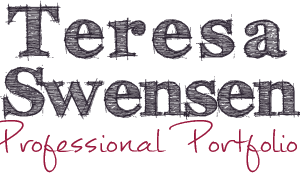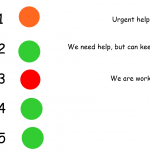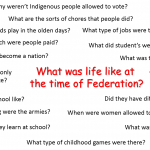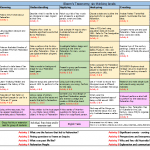As part of a school wide focus on improving student writing, I created a Bump it up wall in my classroom. The specific purpose of the wall is to provide students a visual representation to allow them to track their writing. Each writing sample on the wall has specific writing goals linked to it, which were drawn from the literacy continuum and Brightpath. Students are involved in small group conferences and together determine three very explicit and individual writing goals. As students reach their writing goals, they receive a leaf to place on the tree. An added benefit of the Bump It Up wall, is that it allows students to self-assess their work and for some students reaching a higher level proves to be a strong motivator. They can see exactly what they need to do to improve their work, and the samples show the quality of work that can be produced at each level.
Opportunities to improve writing are provided daily when students are provided a picture prompt from Pobble365. Whilst I provide students a focus on a concept taught in English, such as including a similie, they are provided a task such as describing the setting. Each day I work with a small group of students working at a similar level on similar goals and decide if goals have been reached, provide a short individual lesson or write new goals. These groups are meeting whilst other students are working on the daily writing task.
Reflecting on the Bump It Up Wall, I have noticed a genuine focus from students in reaching their goals and reaching higher levels in their writing compared to earlier in the year when students had only goals they were working towards determined by me.
This demonstrates evidence towards focus area 1.5, focus area 2.5, focus area 3.1, and focus area 5.2.




 The history unit delivered to the year 3 class was sourced from Education Queensland’s C2C. One of the initial lessons of unit 2 required students to create a time line. In the previous unit I noted that some students had difficulty creating a personal timeline. They were able to identify significant events in their life, but some students had difficulty representing these events chronologically on the prepared timeline that was to be pasted into their books. Research indicates that there are a range of factors that can initiate situational interest resulting in greater engagement and learning (Duchesne, McMaugh, Bochner & Krause, 2013). Based on this, I adapted the lesson in unit 2 to provide students the opportunity to create a visual display, providing them with some choice as to the presentation of the timeline but with the requirement of the photographs needed to be in chronological order. Taking away the element of writing and thinking of their own events, students were provided with pre-labeled photographs. In this task, all students created a visually pleasing timeline that was chronologically correct.
The history unit delivered to the year 3 class was sourced from Education Queensland’s C2C. One of the initial lessons of unit 2 required students to create a time line. In the previous unit I noted that some students had difficulty creating a personal timeline. They were able to identify significant events in their life, but some students had difficulty representing these events chronologically on the prepared timeline that was to be pasted into their books. Research indicates that there are a range of factors that can initiate situational interest resulting in greater engagement and learning (Duchesne, McMaugh, Bochner & Krause, 2013). Based on this, I adapted the lesson in unit 2 to provide students the opportunity to create a visual display, providing them with some choice as to the presentation of the timeline but with the requirement of the photographs needed to be in chronological order. Taking away the element of writing and thinking of their own events, students were provided with pre-labeled photographs. In this task, all students created a visually pleasing timeline that was chronologically correct.

